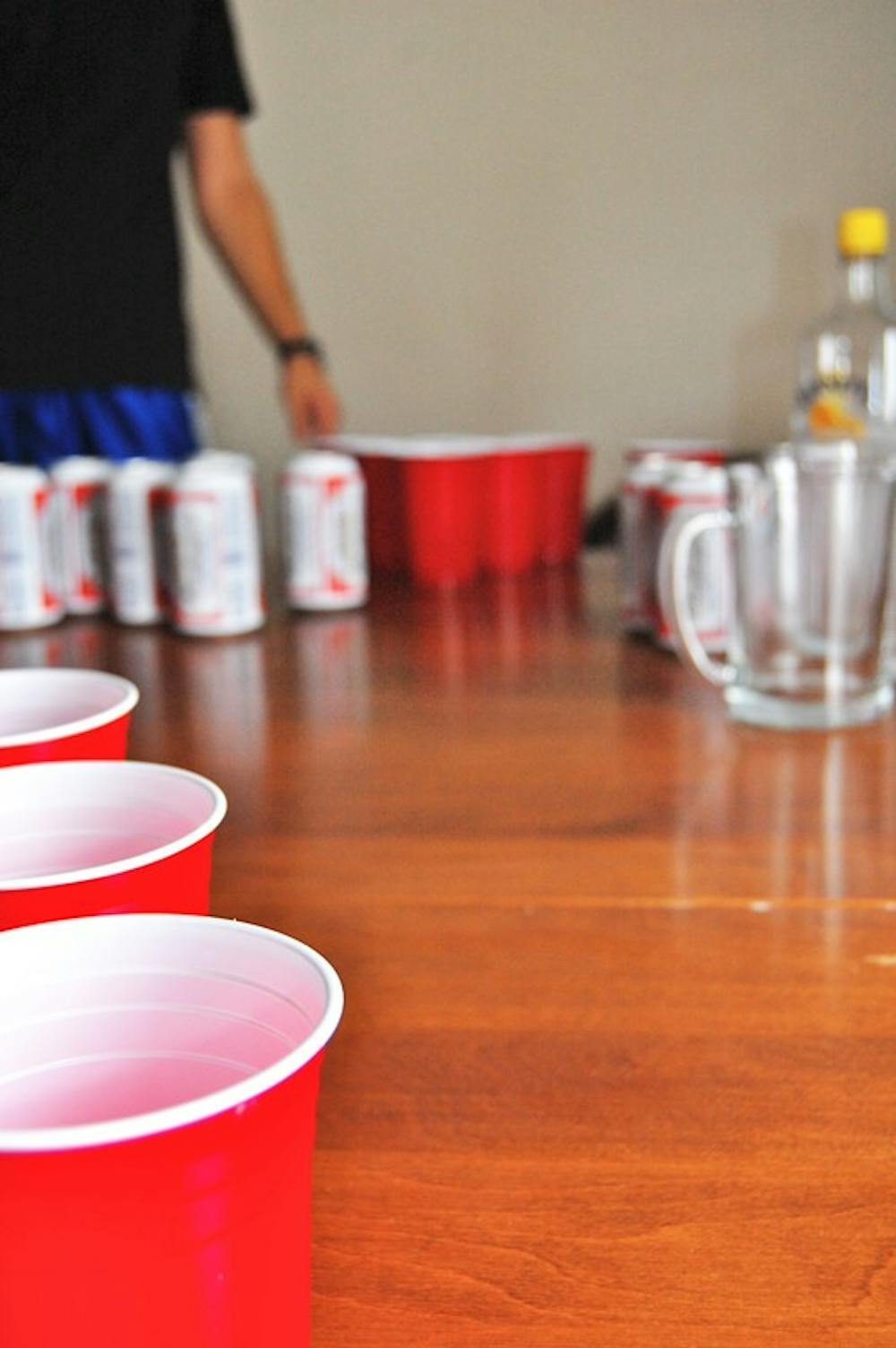You bring alcohol into your dorm room. You get caught by your resident advisor. And so the disciplinary process begins.
Some would consider this a rather typical part of a college experience. But what happens next - the process itself, the punishments and the very policies that back them up - can vary widely at universities across the state.
At the College of William & Mary, for example, The Flat Hat student newspaper has found that the school's administration has one of the state's tougher university alcohol policies. Many students seem to agree with this assessment, believing William & Mary's policy is "significantly stricter than other colleges," said Ryan Ruzic, director of Student Legal Services at William & Mary.
Although most universities prohibit kegs at events, William & Mary also has a shared container policy for on-campus housing that prohibits alcohol in containers larger than .75 liters, even if the residents are students of legal drinking age. This rule applies to pitchers, bowls and even larger bottles of wine, Ruzic said.
During the summer, the administration also decided to prohibit alcohol paraphernalia in on-campus housing, Ruzic said. For example, beer pong tables would be considered a violation, he said.
Accused students at William & Mary have the option either to resolve the situation in an informal hearing with the dean or to pursue a trial in front of a disciplinary committee. Either way, Ruzic said, the alcohol policies outline possibilities for some "very real punishment," including revoking a student's on-campus housing. Such an action can have a devastating impact, he said. In addition, the punishments do not follow a strict formula, often relying instead on the discretion of the administrator, Ruzic said.
These policies have an especially strong effect on some William & Mary students because the majority of students live on campus even as upperclassmen, Ruzic said. As a result, many 21-year-olds are affected by policies that are really designed for individuals younger than the legal drinking age, he said.
William & Mary tries to have students, and especially those who violate policy, go through an alcohol education program, Ruzic said. Nevertheless, he said he doubts the effectiveness of these measures.
"I am sure there are things people can learn but probably have little effect on whether a student continues to drink or not," he said.
Ultimately, Ruzic said, he feels that the strictness or leniency of a college's alcohol policy is unlikely to impact the prevalence of drinking among students.
"The real question is how much do you want to punish the students," he said. "I think William & Mary has chosen to err on the side of providing substantial punishment."
Meanwhile, at Radford University, students who violate alcohol policies are subject to a more definite formula for punishment than the one used at William & Mary. David Horton, assistant dean of students at Radford, said his university has a dry campus with a zero-tolerance policy for alcohol.
To maintain this policy, Radford operates under "a progressive disciplinary system," he said, with each violation having a stricter punishment, culminating in a "three-strikes-and-you're-out system."
So where does the University fall within this spectrum? Susan Bruce, the director of the Center of Alcohol and Substance Education, said the University tends to focus on education rather than on being punitive. Rather than implementing a three-strikes policy, Bruce said the University takes each incident on a case-by-case basis to maintain "a very educational focus in sanctioning." In addition, the University emphasizes using the University Judiciary Committee and other peer systems instead of relying on police involvement.
For example, the University focuses on providing students with alcohol education programs and programs, such as "Hoos in Recovery," a student group that meets twice a month for its members to support each other in their recovery from addictions, she said. Bruce said 150 students on average are referred to education programs each year.
"There is a lot of power in having your peers say, 'This is not acceptable, here's how you are going to pay back the community,'" Bruce said. "I feel that UJC does a good job of looking at the individual circumstances of each case. We want to create an environment where students can learn from their mistakes"







